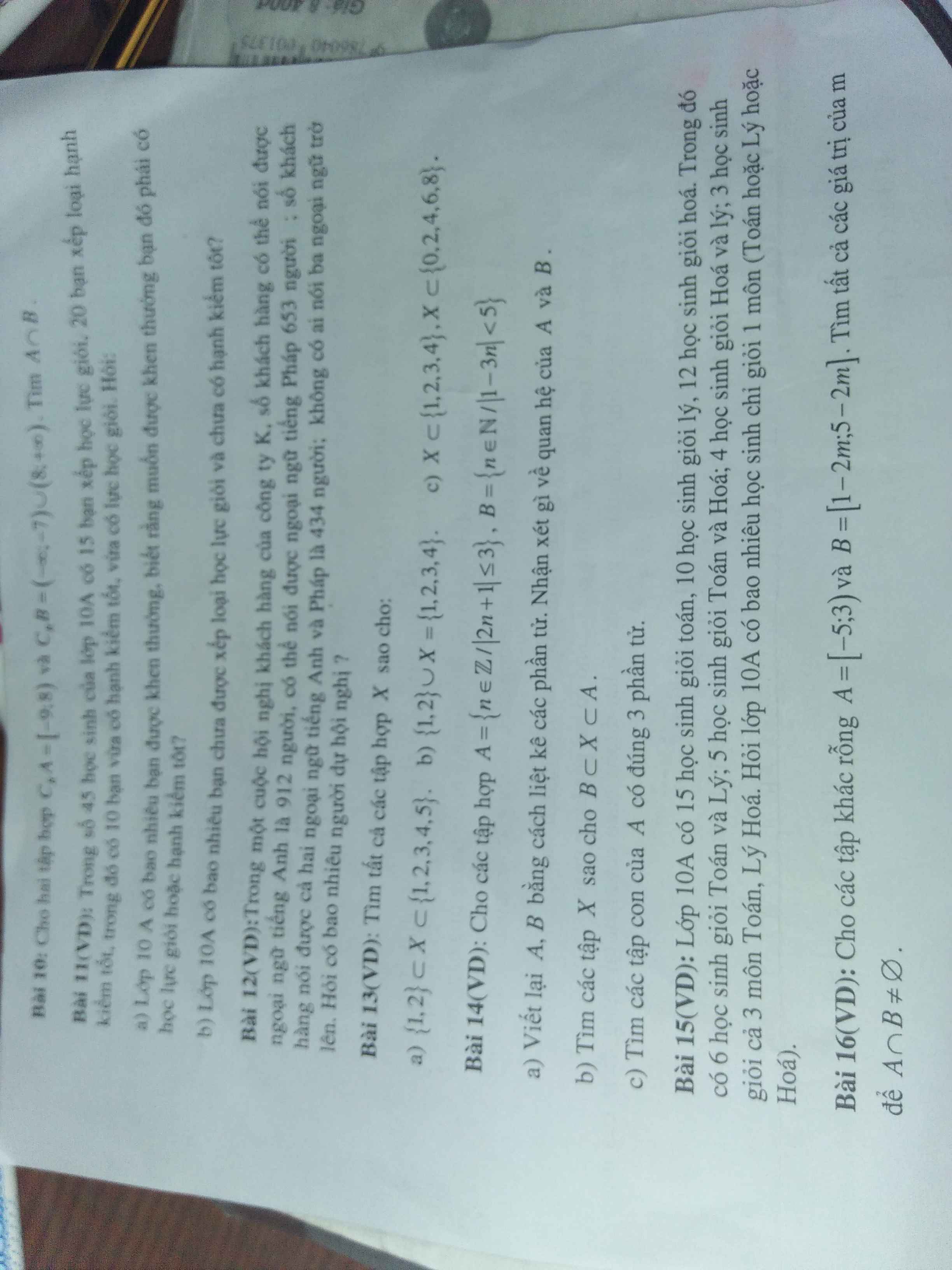
Hãy nhập câu hỏi của bạn vào đây, nếu là tài khoản VIP, bạn sẽ được ưu tiên trả lời.





1.
Phương trình có 2 nghiệm dương pb khi:
\(\left\{{}\begin{matrix}\Delta'=\left(m+1\right)^2-\left(2m+46\right)=m^2-45>0\\x_1+x_2=2\left(m+1\right)>0\\x_1x_2=2m+46>0\end{matrix}\right.\) \(\Rightarrow m>3\sqrt{5}\)
Khi đó:
\(\left|\sqrt{x_1}-\sqrt{x_2}\right|=2\)
\(\Leftrightarrow x_1+x_2-2\sqrt{x_1x_2}=4\)
\(\Leftrightarrow2\left(m+1\right)-2\sqrt{2m+46}=4\)
\(\Leftrightarrow2m+46-2\sqrt{2m+46}-48=0\)
Đặt \(\sqrt{2m+46}=a>0\)
\(\Rightarrow a^2-2a-48=0\Leftrightarrow\left[{}\begin{matrix}a=8\\a=-6\left(loại\right)\end{matrix}\right.\)
\(\Rightarrow\sqrt{2m+46}=8\)
\(\Rightarrow m=9\)
2.
Kết hợp pt thứ 2 và điều kiện đề bài ta được:
\(\left\{{}\begin{matrix}mx+3y=m+3\\x-3y=2\end{matrix}\right.\) \(\Leftrightarrow\left\{{}\begin{matrix}\left(m+1\right)x=m+5\\x-3y=2\end{matrix}\right.\)
\(\Rightarrow\left\{{}\begin{matrix}m\ne-1\\x=\dfrac{m+5}{m+1}\\y=\dfrac{-m+3}{3\left(m+1\right)}\end{matrix}\right.\)
Thay vào pt đầu:
\(\Rightarrow\dfrac{2\left(m+5\right)}{m+1}+\dfrac{\left(m-1\right)\left(-m+3\right)}{3\left(m+1\right)}=4\)
\(\Rightarrow m^2-2m-15=0\Rightarrow\left[{}\begin{matrix}m=-5\\m=3\end{matrix}\right.\)

a: Hàm số nghịch biến trên R
b: \(\dfrac{f\left(x_1\right)-f\left(x_2\right)}{x_1-x_2}=\dfrac{x_1^2-4x_1+5-x_2^2+4x_2-5}{x_1-x_2}\)
\(=x_1+x_2-4\)
Trường hợp 1: x<=2
\(\Leftrightarrow x_1+x_2-4< =0\)
Vậy: Hàm số nghịch biến khi x<=2


5:
a: sin x=2*cosx
\(A=\dfrac{6cosx+2cosx-4\cdot8\cdot cos^3x}{cos^3x-2cosx}\)
\(=\dfrac{8-32cos^2x}{cos^2x-2}\)
b: VT=sin^4(pi/2-x)+cos^4(x+pi/2)+6*1/2*sin^22x+1/2*cos4x
=cos^4x+sin^4x+3*sin^2(2x)+1/2*(1-2*sin^2(2x))
=1-2*sin^2x*cos^2x+3*sin^2(2x)+1/2-sin^2(2x)
==3/2=VP


\(2\left(\overrightarrow{IA}+\overrightarrow{AB}\right)+3\left(\overrightarrow{IA}+\overrightarrow{AC}\right)=\overrightarrow{0}\Leftrightarrow5\overrightarrow{IA}+2\overrightarrow{AB}+3\overrightarrow{AC}=\overrightarrow{0}\)
\(\Leftrightarrow\overrightarrow{AI}=\dfrac{2}{5}\overrightarrow{AB}+\dfrac{3}{5}\overrightarrow{AC}\)
\(\overrightarrow{JB}+\overrightarrow{BA}+3\overrightarrow{JB}+3\overrightarrow{BC}=\overrightarrow{0}\Leftrightarrow\overrightarrow{BJ}=-\dfrac{1}{4}\overrightarrow{AB}+\dfrac{3}{4}\overrightarrow{BC}=-\dfrac{1}{4}\overrightarrow{AB}+\dfrac{3}{4}\overrightarrow{BA}+\dfrac{3}{4}\overrightarrow{AC}\)
\(=-\overrightarrow{AB}+\dfrac{3}{4}\overrightarrow{AC}\)
\(\Rightarrow\overrightarrow{AI}.\overrightarrow{BJ}=\left(\dfrac{2}{5}\overrightarrow{AB}+\dfrac{3}{5}\overrightarrow{AC}\right)\left(-\overrightarrow{AB}+\dfrac{3}{4}\overrightarrow{AC}\right)\)
\(=-\dfrac{2}{5}AB^2+\dfrac{9}{20}AC^2-\dfrac{3}{10}\overrightarrow{AB}.\overrightarrow{AC}\)
\(=-\dfrac{3}{5}a^2+\dfrac{9}{20}a^2-\dfrac{3}{10}a^2.cos60^0=-\dfrac{3}{10}a^2\)
b.
Từ câu a ta có
\(\overrightarrow{AI}=\dfrac{2}{5}\overrightarrow{AB}+\dfrac{3}{5}\overrightarrow{AC}\) (1)
\(\overrightarrow{JA}+3\overrightarrow{JC}=\overrightarrow{0}\Leftrightarrow\overrightarrow{JA}+3\overrightarrow{JA}+3\overrightarrow{AC}=\overrightarrow{0}\Leftrightarrow\overrightarrow{JA}=-\dfrac{3}{4}\overrightarrow{AC}\) (2)
Cộng vế (1) và (2):
\(\overrightarrow{JA}+\overrightarrow{AI}=-\dfrac{3}{4}\overrightarrow{AC}+\dfrac{2}{5}\overrightarrow{AB}+\dfrac{3}{5}\overrightarrow{AC}\)
\(\Leftrightarrow\overrightarrow{JI}=\dfrac{2}{5}\overrightarrow{AB}-\dfrac{3}{20}\overrightarrow{AC}\)
\(\Rightarrow IJ^2=\overrightarrow{JI}^2=\left(\dfrac{3}{5}\overrightarrow{AB}-\dfrac{3}{20}\overrightarrow{AC}\right)^2=\dfrac{9}{25}AB^2+\dfrac{9}{400}AC^2-\dfrac{9}{50}\overrightarrow{AB}.\overrightarrow{AC}\)
\(=\dfrac{9}{25}a^2+\dfrac{9}{400}a^2-\dfrac{9}{50}.a^2.cos60^0=...\)









Nếu này làm xong thêm 1 bước nửa giao hợp tập nghiệm á em
Í giờ em mới để ý lớp 10 :(( Tại lớp 9 em mới học có nhiu đó à